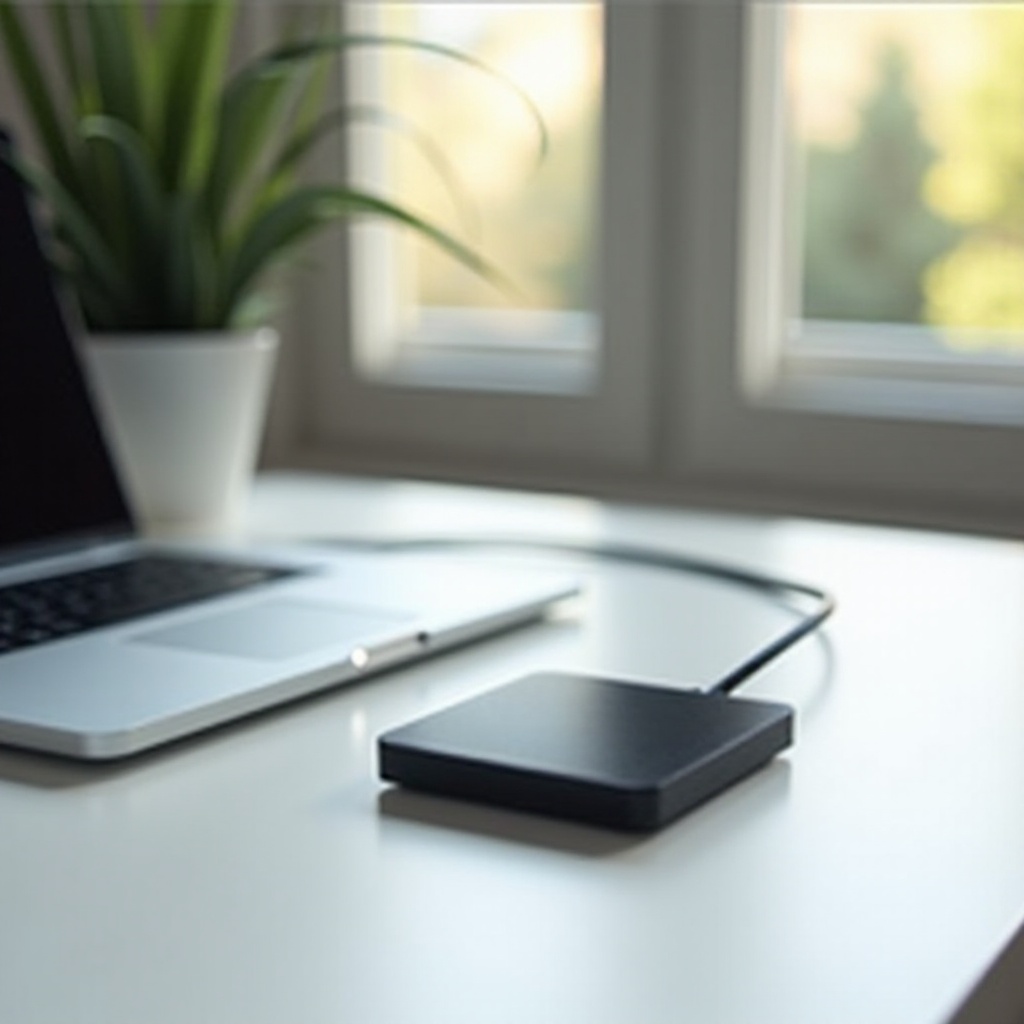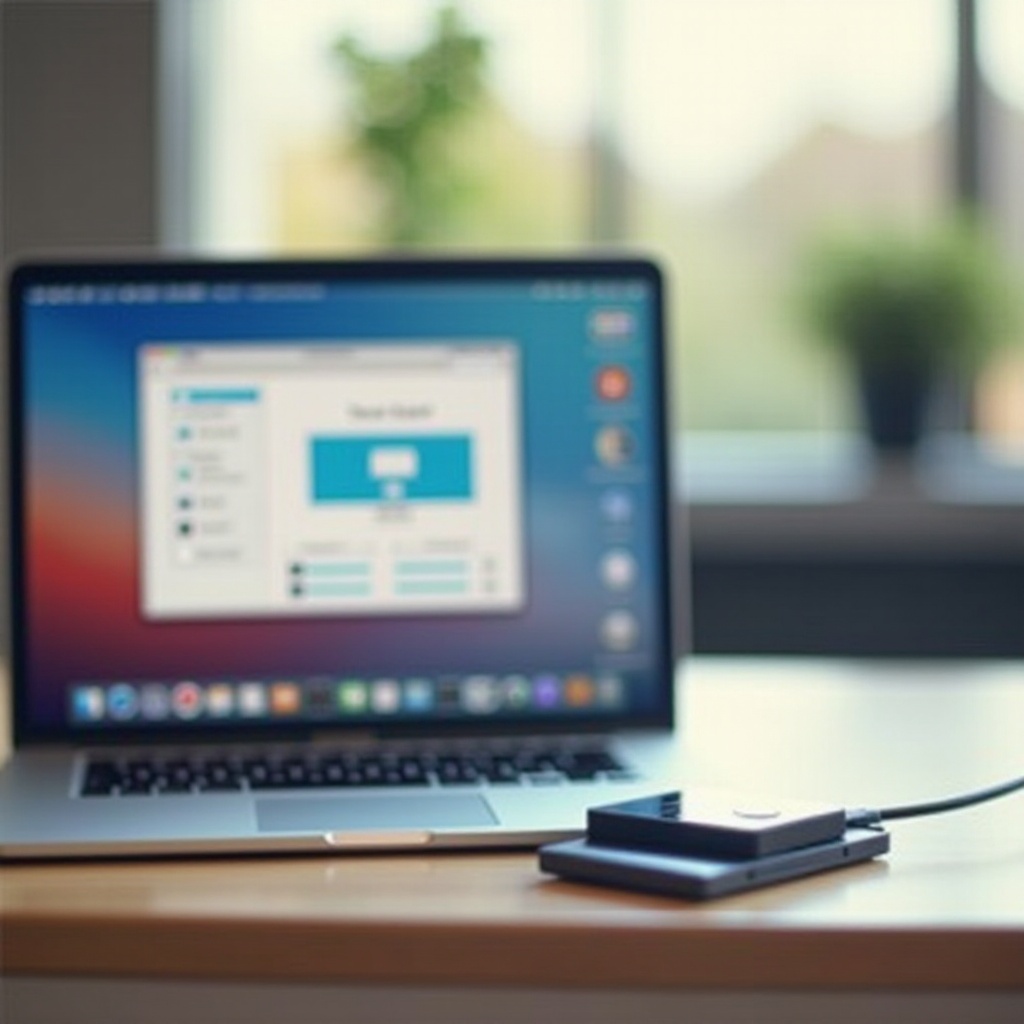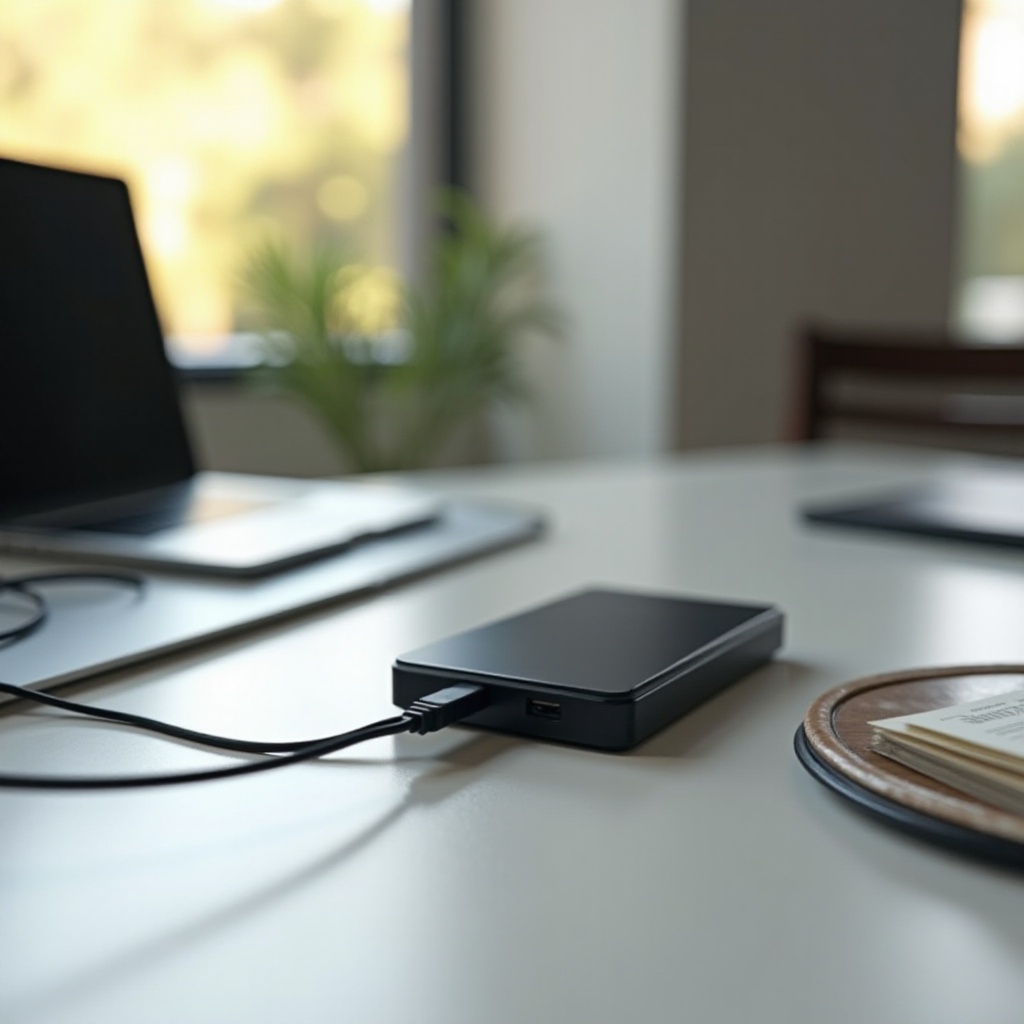Introduction
In today’s digital world, safeguarding your data is crucial. Your laptop houses vast amounts of valuable information, making regular backups essential to protect against data loss from unexpected incidents like hardware failures, malware, or accidental deletions. Using an external hard drive to back up your data offers a reliable solution that combines ease of use with robust protection. This comprehensive guide will walk you through the steps of backing up your laptop to an external hard drive, for both Windows and macOS users.

Understanding the Benefits of Using an External Hard Drive
External hard drives offer numerous advantages for creating backups. They enable you to keep your data completely separate from your laptop, adding an extra layer of security. Additionally, these devices are portable, allowing you to carry your backups with you and access them whenever needed. Such flexibility makes them a favored choice for protecting against online threats like ransomware that could compromise your data.
Choosing the Right External Hard Drive
Choosing the right external hard drive is an essential part of creating a reliable backup system. When selecting a drive, consider factors such as storage capacity, transfer speed, and durability to ensure it aligns with your needs.
Factors to Consider
-
Storage Capacity: Consider how much data you need to store and choose a drive with sufficient space for both your current and future data storage demands.
-
Speed: For efficient transfers, choose drives that offer USB 3.0 or USB-C interfaces, which offer faster data transfer rates.
-
Durability: If you expect frequent travel with your drive, select a robust design that can endure possible physical impacts.
Recommended External Hard Drives for 2024
-
Seagate Backup Plus Ultra Touch: A reliable choice offering substantial storage space and a smooth performance ideal for regular backups.
-
Western Digital My Passport: Recognized for its dependability and security features, perfect for securing large quantities of data.
-
Samsung T7 Portable SSD: High-speed and efficient, the SSD is ideal for users needing faster data transfers.
Preparing Your Laptop for Backup
Before beginning your backup process, it’s crucial to ensure that your laptop is adequately prepared. This involves organizing your data, assessing your disk’s health, and ensuring that your software is current.
-
Clean Your Data: Remove unneeded files to conserve space and to quicken the backup process.
-
Check Disk Health: Execute disk diagnostics to confirm there are no issues with your laptop’s hard drive.
-
Update Software: Make sure your operating system and software are up-to-date to prevent any potential issues during the backup process.

Step-by-Step Guide to Backing Up on Windows
Let’s dive into the backup process specifically for Windows laptops.
Using Windows Backup and Restore
-
Connect Your External Hard Drive: Start by plugging in your external hard drive using the appropriate USB cable.
-
Open Control Panel: Navigate to ‘System and Security’ and select ‘Backup and Restore’.
-
Set Up Backup: Follow the on-screen prompts, choosing your external drive as the backup location.
-
Choose Files: You can either go with the default option recommended by Windows or select specific files and folders for your backup.
-
Schedule: Set up a backup schedule that suits your routine and then initiate the backup.
Manually Copying Files
-
Open File Explorer: Navigate to the folders containing the files you intend to backup.
-
Copy and Paste: Right-click the selected files, copy them, and paste them onto a folder on your connected external drive.
Step-by-Step Guide to Backing Up on macOS
For Mac users, Apple’s built-in Time Machine tool makes backing up straightforward.
Using Time Machine
-
Connect Your Drive: Attach your external drive to your Mac using the appropriate port.
-
Open Time Machine Preferences: Go to System Preferences, choose ‘Select Disk’, and select your external drive.
-
Enable Time Machine: Turn it on to start backing up your files at regular intervals automatically.
Alternative Methods
For those looking for other options:
-
Manual Copy: Similar to Windows, you can drag and drop files directly to your external drive using Finder.
-
Third-Party Software: Consider using applications like Carbon Copy Cloner or SuperDuper! for advanced backup options.
Securing Your Backup
Ensuring the security of your backups is vital. Encrypting your external drive offers an additional security layer by thwarting unauthorized access to your data. This step is especially recommended if your backup drive contains sensitive information.

Troubleshooting Common Issues
Even with careful planning, issues might arise during the backup process. Here are some common solutions:
External Hard Drive Detection Problems
-
Reconnect: Disconnect and reconnect the drive to ensure it’s correctly connected.
-
Try Another Port: Test a different USB port to eliminate the potential of port-specific issues.
Incomplete or Corrupted Backups
-
Check Space: Confirm your external drive has sufficient space available for the backup.
-
Retry: Initiating the backup process again can often resolve temporary discrepancies or failures.
Conclusion
Regularly backing up your laptop to an external hard drive is a prudent practice to safeguard your data against loss or corruption. By following the guidelines and steps given in this article, you can establish a reliable backup routine, ensuring your files and systems are secure.
Frequently Asked Questions
How often should I back up my laptop?
Aim to back up at least once a week, though daily backups provide better protection, especially for critical uses.
What is the difference between a full backup and an incremental backup?
A full backup copies all data every time, consuming more storage. An incremental backup only saves changes made since the last backup, saving space and time.
How do I ensure my data is secure after backing up?
Implement encryption and store your external drive in a safe location, inaccessible to unauthorized users.
